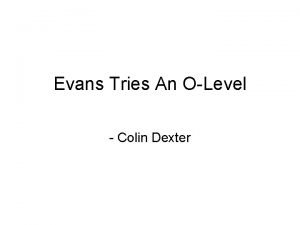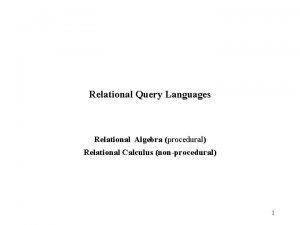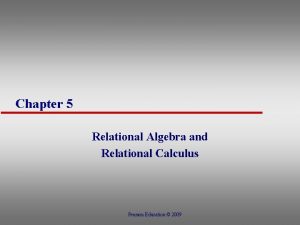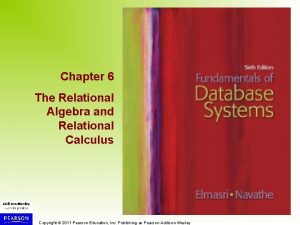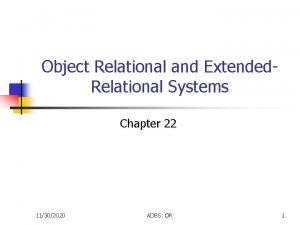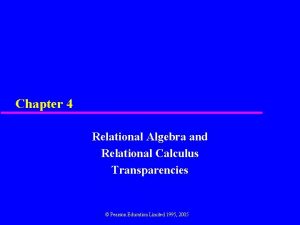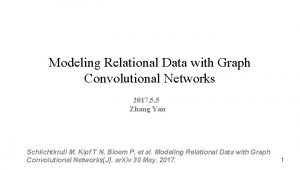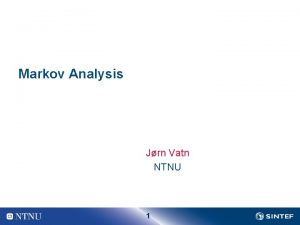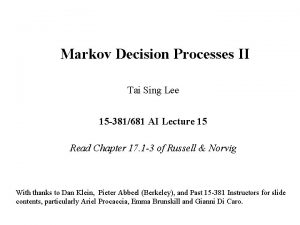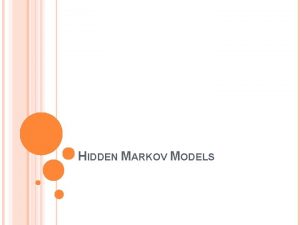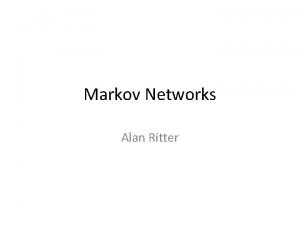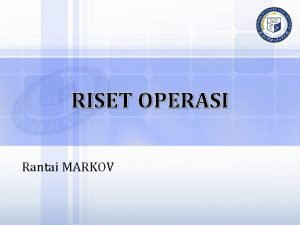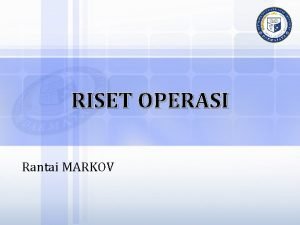Overview of Relational Markov Networks Colin Evans Relational











- Slides: 11

Overview of Relational Markov Networks Colin Evans

Relational Schema

Relational Data – an Instantiation

Problem • How do we find an optimal assignment of labels I. y to a set of variables I. x in a specific instantiation I? • We need an objective function p(I. y|I. x) that indicates the quality of an assignment of labels. • The objective function should take into account the relational structure of the data.

Relational Clique Templates • A template C is an algorithm for selecting a subset of nodes requiring labels – essentially a logical query. – “Find all label attributes A, B with pages C, D where C has. Label A and D has. Label B and C links. To D” • A specific subset is called a clique, I. xc. • An potential function fc(I. yc|I. xc) where I. yc is a subset of I. y is associated with the template. • An example potential function for the above template: – A=B → 1 – A≠B → 0

Markov Networks • Given a set of templates C and a set of cliques C(I), we can construct a Markov Network by connecting each of the cliques.

Markov Networks • Given a Markov Network, we have the following JPD:

Potential Functions • A weight wc associated with each clique template C is inserted to balance the contribution of each potential function. • These weights need to be learned.

How do we learn the weights? • Gradient Descent • Perceptron Learning • Other optimization methods

How do we find an optimal labeling? • Modeling the relationships of the cliques as a Markov Network and use the sum-product algorithm. – Problem: sum-product is only proven to converge on trees.

Other Issues • How does this method work if you have a large body of “correctly” labeled relational data and only wish to apply a small number of labels? – Email classification is a good example of this. – Complexity of assigning a label goes down, but we still use relationships to determine the label. • Could one template “dominate” in a specific data set? Does there need to be a factor which normalizes the contribution of a template if it produces too many cliques? • How do you test the “usefulness” of a template?
 Colin dexter introduction
Colin dexter introduction Procedural query language
Procedural query language Relational algebra to tuple relational calculus
Relational algebra to tuple relational calculus Relational calculus symbols
Relational calculus symbols Object relational and extended relational databases
Object relational and extended relational databases Relational calculus
Relational calculus Modeling relational data with graph convolutional networks
Modeling relational data with graph convolutional networks Difference between datagram and virtual circuit network
Difference between datagram and virtual circuit network Backbone networks in computer networks
Backbone networks in computer networks What is markov analysis
What is markov analysis What is markov analysis
What is markov analysis Value iteration
Value iteration
